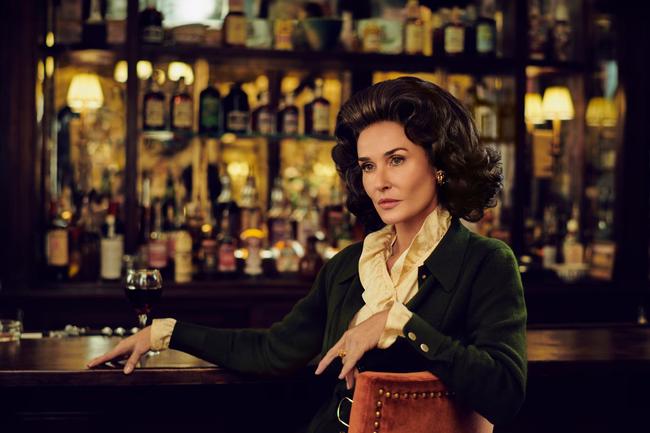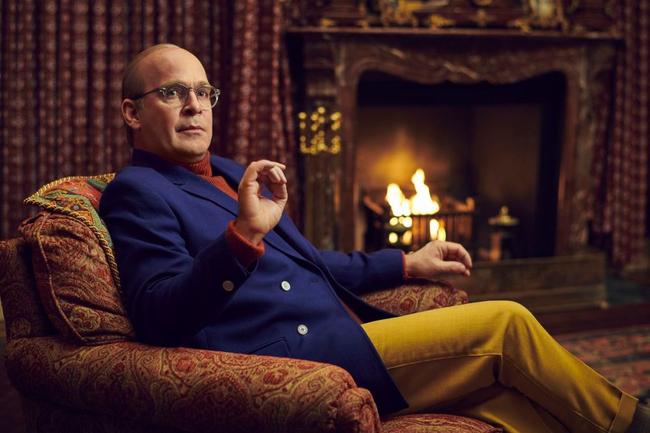The story of Truman Capote and his Swans is explored in 'Feud: Capote vs. The Swans'
The elegance of mid-century New York is given fresh life in this new miniseries, examining the relationship between Truman Capote and his Swans.
Fashion
Don't miss out on the headlines from Fashion. Followed categories will be added to My News.
The elegance of mid-century New York is given fresh life in this new miniseries, examining the relationship between Truman Capote and his Swans.
Why did he do it? Perhaps Truman Capote didn’t realise divulging the most scandalous secrets of his Swans, the coterie of beautiful society women the celebrated author of Breakfast at Tiffany’s and In Cold Blood “collected” and kept close in gossipy confidence in the drawing rooms of Manhattan’s most glittering addresses, would turn most of them so thoroughly against him.
But that is what happened when the Lilliputian author revealed the sordid tales of Park Avenue’s best hostesses in La Côte Basque, 1965, an article first published in Esquire magazine. These women included Lee Radziwill, celebrated decorator and sister to Jacqueline Kennedy Onassis and the patrician CZ Guest, a fabulous gardener and a long-time favourite of Slim Aarons. (After all, Aarons specialised in photographing “attractive people doing attractive things in attractive places”, which was, it must be said, the life’s work of a Swan.) There was the Italian princess Maria Agnelli and the much-married socialites “Slim” Keith and Gloria Guinness, a woman once described by WWD as “the ultimate in elegance” and said to be one of the few muses to Cristóbal Balenciaga.
Capote’s most prized Swan was Barbara “Babe” Paley, treasured wife of CBS television network founder William S Paley. Elegant and impeccable on every front, Babe was a regular on the international best-dressed list and the kind of woman who could hurriedly tie a silk neck scarf on her handbag on a hot summer’s day and inspire millions of women to quickly follow suit. Capote once wrote of Paley: “Mrs P had only one fault: she was perfect; otherwise, she was perfect.” Paley had once held Capote as her only real confidante; after the publication of La Côte Basque, 1965, like many of the Swans, she never spoke to him again. The quite spectacular downfall of Truman Capote in certain circles is set to receive the glossy Ryan Murphy treatment with a new limited series, Feud: Capote vs. The Swans, streaming on Binge in February.
Alongside The White Lotus’s second season schemer Tom Hollander as Capote, the series includes the kind of high-wattage star power (and style-icon status) required to play the women who remain perennial sartorial muses and a source of fascination long after their final swan songs. Naomi Watts stars as Paley; Guest will be portrayed by Chloë Sevigny; Calista Flockhart appears as Radziwill; Keith will be played by Diane Lane. Molly Ringwald will star as Joanne Carson, wife of the television host Johnny, who provided a sanctuary for Capote after his Swans turned on him. Demi Moore will portray the tragic tale of Ann Woodward, an old Hollywood stalwart betrayed by Capote.

Costume designer Lou Eyrich, a longtime collaborator of Ryan Murphy—the pair’s working relationship dates all the way back to Glee—says Capote’s Swans are a perennial source of fascination for herself and Murphy. The television mogul would often direct Eyrich to “Think Babe” when crafting the wardrobes of some of his other impeccable onscreen women. (Gwyneth Paltrow in The Politician, for example? “Very good!” confirms Eyrich.) “It is kind of the same as with the Kennedys or the monarchy in the UK. I don’t know if it’s something that’s not attainable for everyone,” muses Eyrich, of the fascination with the Swans and their impact on the fashions of their moment. “Is it that they are the style influencers of the era?” Indeed such influence can still be felt now, from Tory Burch naming a bag for Lee Radziwill to the elegance on display at the likes of Carolina Herrera and Max Mara.
As Eyrich notes, too, in our current age of “effortlessness”, the kind of put-togetherness of the Swans has fallen by the wayside. “That exquisite style where the hat matches the outfit, matches the shoes, the nails are done, the face is done,” Eyrich explains. “They didn’t just run to the grocery store in their sweatpants. They took the time to care how they looked. The sheer glamour and sophistication! They were just style icons, which is why I’m always so fascinated, but I think it doesn’t exist in that way anymore.” To capture the exquisiteness of the lives each Swan had cultivated for themselves, Eyrich says she and Murphy were meticulous about the details being “period accurate”, from sourcing vintage Mainbocher gowns and Van Cleef & Arpels and Cartier jewellery, to seriously considering the tablescape for a dinner party and thinking about what a Swan might wear to a New Year’s Eve party in the 1970s. (The answer is Halston, always Halston.)
Sign up to the Vogue newsletter
“I feel like at that time it was their duty. Most of the Swans, bar a couple, weren’t born into the money and the wealth and the position,” Eyrich says. “They studied it, they were groomed for it and then they married into it, and then they had to hold that status, that position.
“They had to throw the dinner parties and everything had to be perfectly planned… In the show, we did a couple of scenes where [someone is] meticulously writing out the seating cards and the placing of all the silverware and the napkins and when dinner was being served, the white gloves [of] the servants placing the plates in front of the guests. Everything was with precision.” Vast sums of money was not enough to be a Swan. As Capote once noted, “If expenditure were all, a sizable population of sparrows would swiftly be swans.” Swans were made, not born, all through the act of self-cultivation. (Despite the fact that some of them, including Gloria Guinness, sniffed that chicness could not be taught.) When you understand that perfection doesn’t equal happiness, the allure of the Swans is the idea that you can always reinvent yourself. To know that real chicness is how you present yourself to the world and how you live your life. And the Swans lived their lives with unruffled exteriors, all while furiously paddling away below the surface.

Ultimately, the Swans, and Truman’s ruinous fascination with them, are of course a parable against the follies of ambition, the seduction of glamour, the cost of perfection. Nothing but the absolute best was acceptable in these circles. Or rather, such perfection masked all manner of cracks and follies. Most of these women chose material comforts and status over love. There was a constant need to prove one’s worth.
“There were many affairs and broken marriages… the children were shipped off to boarding schools and not seen for a year. There was a veneer and they weren’t happy, in general,” says Eyrich. Yet as CZ Guest once said, “Style is about surviving, about having been through a lot and making it look easy.” And both before and after the publication of La Cote Basque, 1965, the Swans went through a lot. So why did he do it? Capote’s motivations will surely be the subject of Feud: Capote vs. The Swans, which is based on the 2021 book Capote’s Women: A True Story Of Love, Betrayal and a Swan Song for an Era by Laurence Leamer. Perhaps take your clues from Capote, the notorious gossip, himself. “What did they expect?” he moaned to another sympathetic friend. “I’m a writer, and I use everything. Did all those people think I was just there to entertain them?”
Feud: Capote vs. The Swans streams on Binge from February 1.
This story first appeared in Vogue Australia's February 2024 issue.
Originally published as The story of Truman Capote and his Swans is explored in 'Feud: Capote vs. The Swans'


